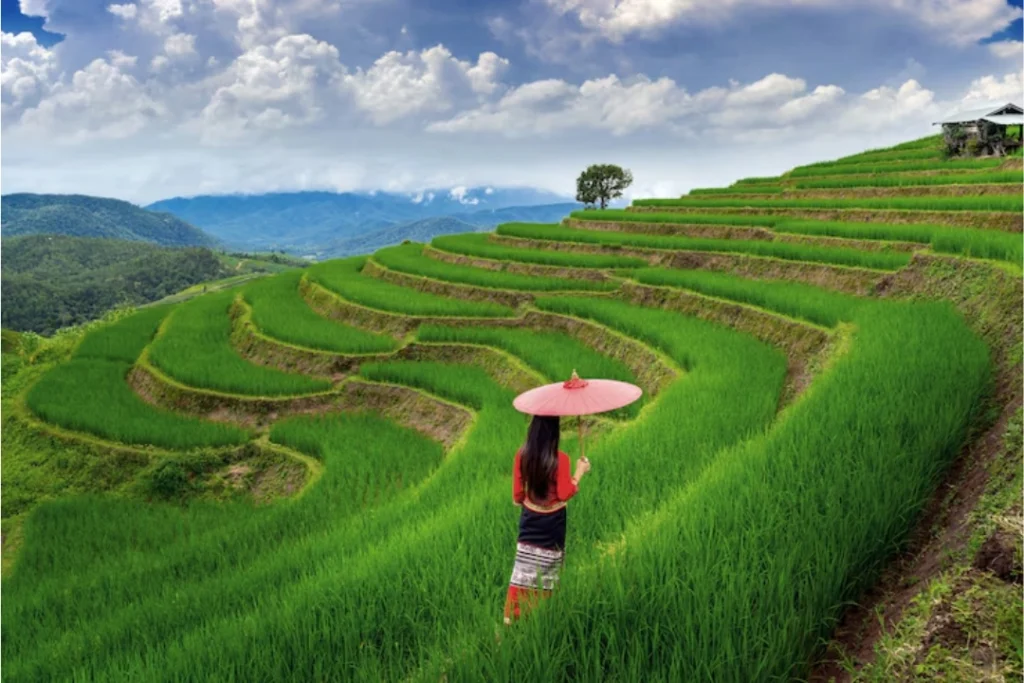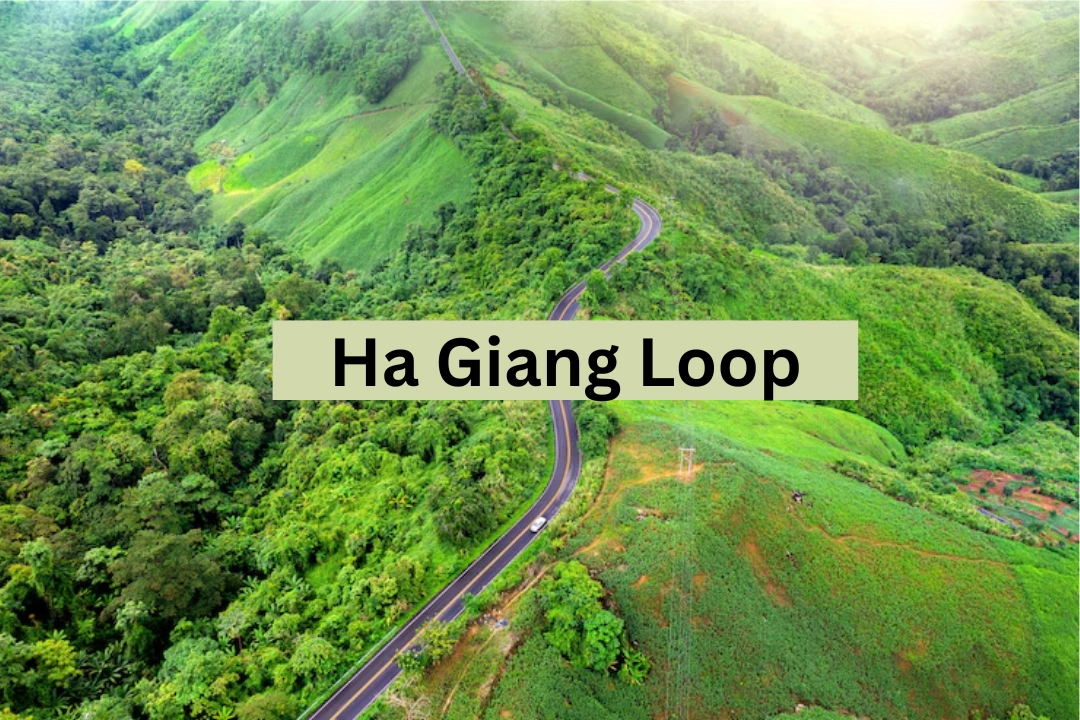Ha Giang Loop: The Ultimate Motorbike Adventure in Northern Vietnam
Tucked away in the northernmost reaches of Vietnam, the Ha Giang Loop offers an unforgettable journey through dramatic mountain passes, vibrant ethnic cultures, and breathtaking landscapes. This motorbike adventure is a must for travelers seeking authentic experiences and unparalleled natural beauty. The loop presents a combination of cultural richness and raw, untouched scenery unlike anywhere else in Southeast Asia.
What is the Ha Giang Loop?
The Giang Loop is a circular motorbike route that stretches around 350 kilometers, beginning and ending in Ha Giang City. This winding journey leads travelers through limestone mountains, scenic valleys, and traditional villages. The loop takes riders across the Dong Van Karst Plateau Geopark a UNESCO-recognized area famed for its rock formations, biodiversity, and cultural heritage. It’s one of Vietnam’s best-kept travel secrets.
Highlights Along the Route
Traveling the Ha Giang Loop introduces you to awe-inspiring sights and deep local culture. One of the top attractions is Ma Pi Leng Pass, often hailed as Vietnam’s most beautiful mountain road. From its summit, you can view the Nho Que River winding through deep canyons. Lung Cu Flag Tower, standing at the northernmost tip of the country, offers panoramic views across the Vietnamese-Chinese border. In Dong Van Old Quarter, cobbled streets and French colonial houses take you back in time, while Meo Vac Market immerses you in the colorful life of local hill tribes.
Cultural Encounters in Ha Giang

Ha Giang Province is home to over 20 ethnic minority groups, including the Hmong, Tay, Dao, and Lo Lo. As you ride through the loop, you’ll witness vibrant traditional clothing, stilt houses, and rituals that remain untouched by modern life. Staying in local homestays gives travelers a front-row seat to these cultures. You’ll get to taste homemade food, enjoy herbal baths, and listen to stories passed down through generations. This connection to people is one of the Giang Loop’s most rewarding aspects.
Best Time to Travel
Choosing the right time for your journey enhances the experience. September to November is the best season, with cool temperatures and golden rice terraces. From March to May, spring flowers bloom and days are sunny. Winter (December–February) can be cold and misty but atmospheric. Avoid June to August, as the rainy season brings slippery roads and occasional landslides.
Accommodation Options
Where you stay during the loop can shape your experience. Most riders stay in towns like Yen Minh, Dong Van, and Meo Vac. Options range from rustic homestays to modern guesthouses.
| Accommodation Type | Description | Price Range (VND/night) |
|---|---|---|
| Homestays | Stay with local families, enjoy meals and traditions | 300,000 – 1,000,000 |
| Guesthouses | Simple rooms with basic facilities | 200,000 – 500,000 |
| Hotels | Comfortable stays with modern amenities | 500,000 – 1,500,000 |
Many homestays are in wooden stilt houses, and hosts often offer cultural dinners and performances.
Safety Tips for Riding the Ha Giang Loop
Safety is critical, especially for inexperienced riders. The roads are narrow, with sharp curves and steep drops. Always wear a quality helmet, keep your headlights on, and avoid riding at night. If you’re unsure about driving yourself, consider hiring an easy rider a local guide who drives you safely while you enjoy the views. Never underestimate the terrain.
Food and Local Cuisine in Ha Giang
Food in Ha Giang is hearty, fresh, and often made from ingredients sourced directly from nearby mountains and rivers. Try thang co, a traditional Hmong soup made from meat, herbs, and bones. Sticky rice steamed in bamboo tubes, grilled corn, and home-brewed corn wine are also common dishes. Each ethnic group has its own recipes, making every meal a chance to taste a new tradition.
Environmental Responsibility and Sustainable Travel
Ha Giang’s remote charm depends on keeping the environment clean and preserving local culture. Don’t litter or damage natural surroundings. Support homestays and eateries run by local families. Choose operators who promote responsible tourism. Traveling respectfully ensures this beautiful region remains unspoiled.
Weather Conditions and What to Expect
The weather in Ha Giang changes fast. Mornings can be foggy, but the mist clears by noon to reveal blue skies. Winter nights get cold, especially in high altitudes. Summer is warm but wet, so bring rain gear. Check forecasts and always ride prepared. A clear day in Ha Giang offers some of the best views in all of Vietnam.
Ha Giang Loop vs. Sapa: What’s the Difference?
While both the Ha Giang Loop and Sapa are located in northern Vietnam and offer stunning landscapes and cultural immersion, they are quite different in terms of experience and accessibility. Sapa is more developed and caters to a larger number of tourists, with smoother, more accessible roads, making it ideal for those looking for a less challenging trip. In contrast, the Giang Loop offers a more rugged and remote adventure, with winding mountain roads that demand more skill and preparation.
Photography and Drone Usage on the Loop
The Giang Loop is a photographer’s dream. Every turn reveals a postcard-worthy view. Drones can capture aerial footage, especially over Ma Pi Leng Pass and terraced fields. Always ask locals for permission before filming near homes or farms. Some border zones may restrict drone usage, so check local guidelines.
How to Get to Ha Giang
To reach the Giang Loop, most travelers take a bus from Hanoi to Ha Giang City. The journey lasts about 6–7 hours. Sleeper buses are available at night, allowing you to rest before beginning your ride. Motorbikes can be rented directly in Ha Giang, often with helmets, jackets, and maps provided.
Conclusion
In a country known for beautiful landscapes, the Giang Loop stands out as a crown jewel. Its remote charm, breathtaking roads, and rich cultural tapestry create a truly unforgettable adventure. Whether you’re looking for quiet mountains, colorful markets, or the challenge of winding roads, the loop offers it all. Plan carefully, ride safely, and prepare for a journey that will stay in your memory forever.
FAQ
How long is the Ha Giang Loop and what can I expect?
The Ha Giang Loop is about 350 km, offering scenic mountain passes, valleys, and cultural villages. Highlights include Ma Pi Leng Pass, Lung Cu Flag Tower, and Dong Van Old Quarter.
What should I know about safety while riding the Ha Giang Loop?
Wear a quality helmet, keep headlights on, and avoid riding at night. If you’re not experienced, consider hiring an “easy rider” to guide you safely through the challenging terrain.







